1Chart: Software for Creating Nashville Number System Charts. Mobile app for iOS. Rookanga Digital, LLC. Version 2.1.3 released May 26, 2018. $15.99. www.1chartapp.com
1Chart is an app for iOS that allows users to make nice-looking Nashville number charts in a relatively short amount of time. For those not familiar with the Nashville number system, 1Chart offers a brief overview on their website1https://www.1chartapp.com/about-numbers/ and more detailed explanations can be found in the references below. Essentially, a Nashville number chart presents the chord names from a standard pop chart (e.g., C7) as scale degrees in a key, with one number equal to one measure and multiple chords in a measure indicated by an underline or box.
For the past six years, I have been using Nashville number charts in my music theory classes to give students an overall view of the functional harmonies, phrase structure, and form of a pop song. Until now, I have created these charts in Microsoft Word, which can generate very professional-looking charts (as seen in Example 1 with accompanying audio). Nonetheless, creating charts in Microsoft Word can be an extremely time consuming task due to the layout modifications required, which is where 1Chart shines. Creating a chart in the 1Chart app (see Example 2) is very speedy, since the software is dedicated to this purpose. In particular, some of the most thorny aspects of creating a chart in Microsoft Word, such as rhythmic notation or hybrid chords in split bars, can be inserted with simply a tap on the screen in 1Chart.
Efficiency is not 1Chart’s only strength. Perhaps the most handy feature is that the app allows users to easily toggle between numbers and traditional chord symbols (Example 3). For the most part, this feature works well, presuming the harmonies stay primarily within the diatonic space. As a music theorist, though, I must note that the mapping sometimes distorts functional implications, especially with more chromatic harmonies. For instance, #4 in E-flat major correctly turns into A, but then it turns into b5 when going back to numbers (leaving one with a strange 2 over b5 chord). There also does not seem to be any support for double sharps or double flats, so #5 in B major turns into G.
Another strength of the 1Chart app is its ability to quickly switch between different layouts. In addition to the two-column arrangement shown in Example 2, 1Chart offers a one-column layout with bullets to separate phrases (Example 4), global font size changes, and various alignment options. That said, the user is limited with regard to layout details as compared to Microsoft Word, and certain issues can crop up depending on the chosen view (such as the truncated measures in Example 5 indicated by the yellow bars). But as described in 1Chart’s artist profile,2https://www.1chartapp.com/cliff-goldmacher-1chart/ the app allows musicians to quickly prototype number charts that, while perhaps not aesthetically dazzling, are much more readable and flexible than a hand-written version.
EXAMPLES
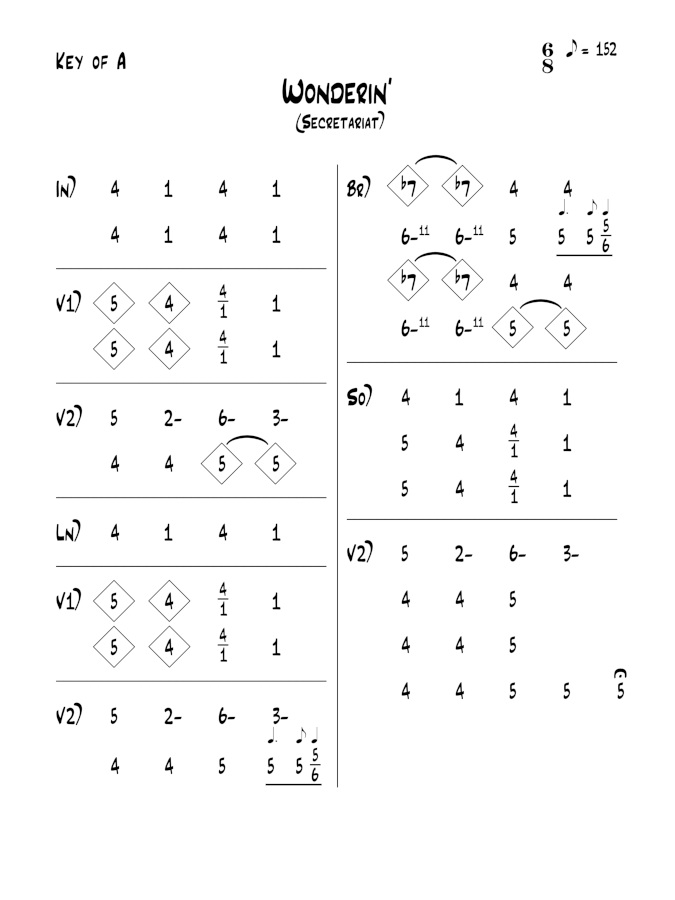
Example 1: A Nashville number chart created in Microsoft Word with Audio. Composer Trevor de Clercq3In order to avoid copyright issues, I provided my own composition for Example 1.
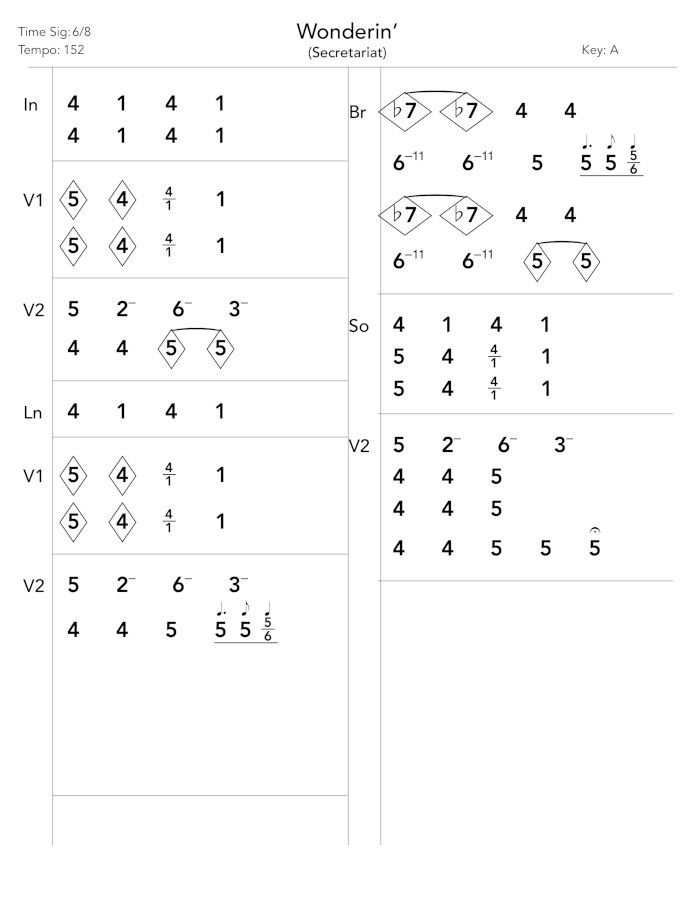
Example 2: A Nashville number chart created in the 1Chart app, two-column version
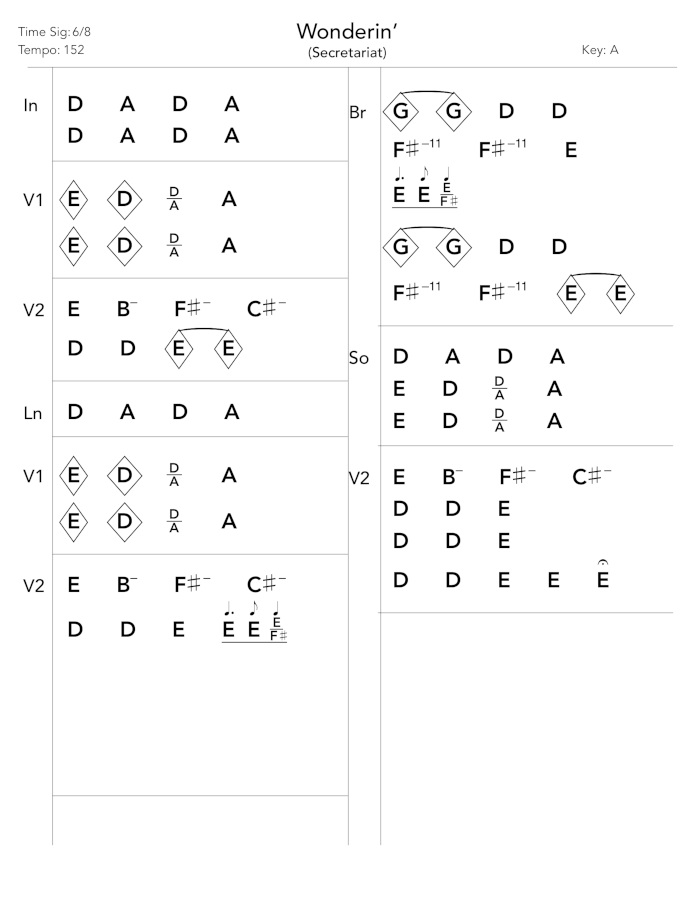
Example 3: A Nashville number chart created in the 1Chart app, pop chord symbol version
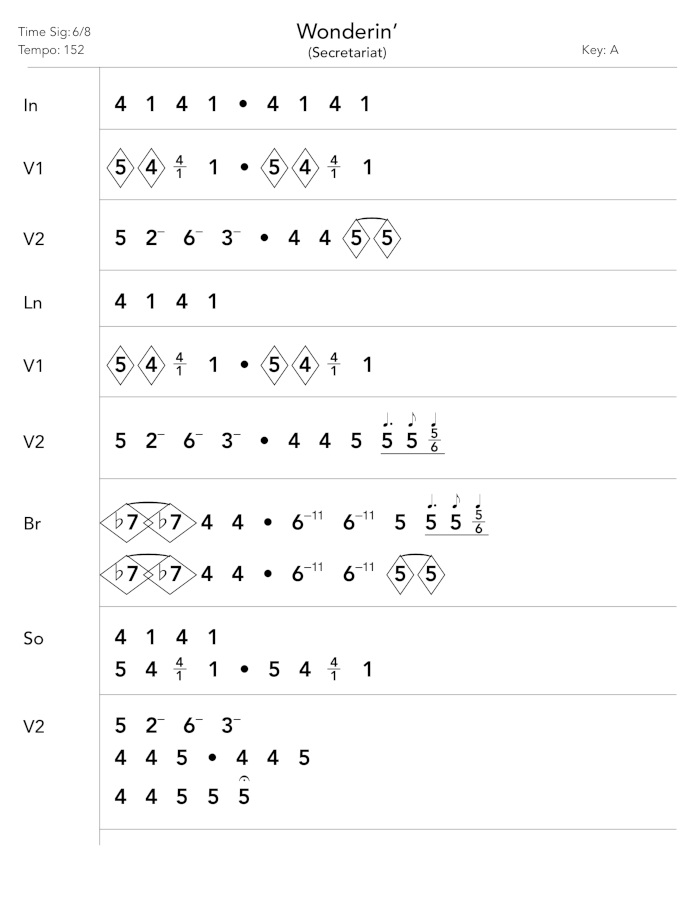
Example 4: A Nashville number chart created in the 1Chart app, one-column, non-aligned version
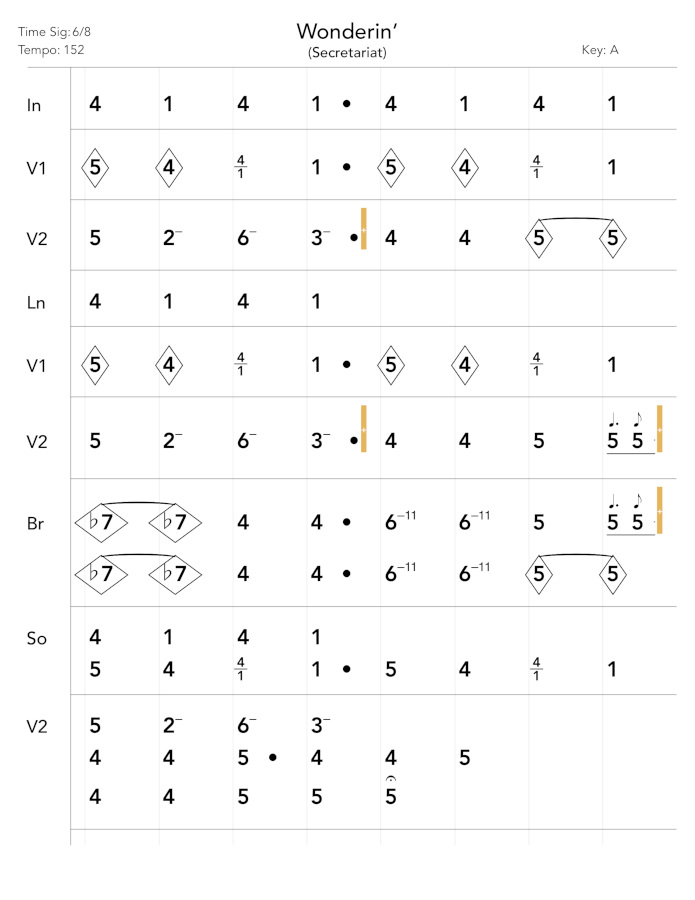
Example 5: A Nashville number chart created in the 1Chart app, one-column aligned version with truncated measures
Notes
1. https://www.1chartapp.com/about-numbers/
2. https://www.1chartapp.com/cliff-goldmacher-1chart/
3. In order to avoid copyright issues, I provided my own composition for Example 1.
References
de Clercq, Trevor. 2015. The Nashville Number System Fake Book. Milwaukee, WI: Hal Leonard Corporation.
Riley, Jim. 2010. Song Charting Made Easy: A Play-along Guide to the Nashville Number System, 2nd ed. Milwaukee, WI: Hal Leonard Corporation.
Snodgrass, Jennifer. 2016. Contemporary Musicianship: Analysis and the Artist. Oxford, UK: Oxford University Press.
Williams, Chas. 2012. The Nashville Number System, 7th ed. Nashville, TN: Chas Williams.


